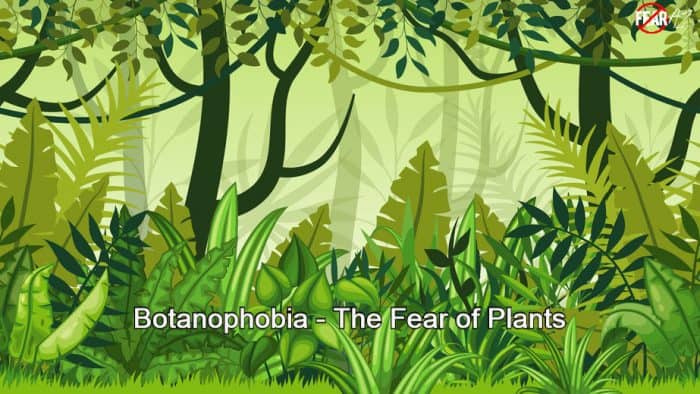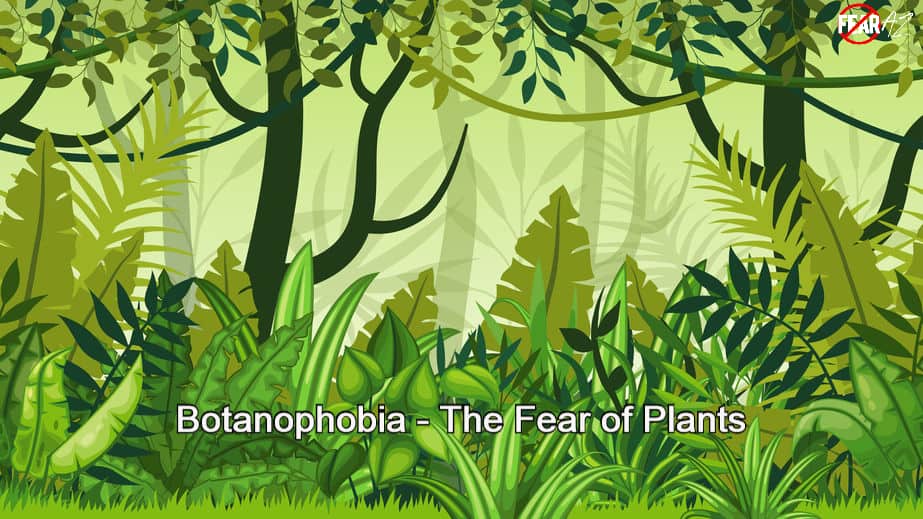Share This Article
Excessive Fear of Plants
Do you hate going to parks or gardens? Have you ever refused to enter a room that had plants in it? Does the thought of being in the countryside or forest, surrounded by looming trees, give you the jitters?
Do you go out of your way to avoid stepping on grass or touching leaves? Are you a devoted carnivore because you can’t stand the idea of touching a vegetable, much less eating it?
If you check yes to all of the above, you might test positive for botanophobia, or the phobia of plants.
You might feel confused about this phobia and how it affects you. After all, why would anyone be afraid of a harmless houseplant? But just because it is in your head doesn’t make it any less real.

What Is Botanophobia?
Botanophobia is the phobia of plants. It comes in the form of extreme anxiety in the presence of shrubs, trees, and other greenery. This phobia is complex compared to others because people are afraid of plants for various reasons.
Botanophobia may arise from superstitions. Ancient tales about the existence of demons, witches, or any form of evil in the form of plants and trees is widely showcased in movies. Some may have heard of carnivorous plants like the Venus flytrap and imagine getting hurt by them. These stories strike fear in the minds of many.
Plant phobias could be associated with a variety of issues, the first and most obvious being trauma from a past event. There could be feelings of loss of someone from a plant-caused injury or condition. Others develop this phobia because of allergic reactions to poison ivy or plant-based food. Some experts believe it’s a result of genetics or brain chemistry.
Symptoms of Botanophobia
The symptoms of botanophobia differ from person to person. This phobia may cause several physical and mental or emotional effects. Here are some of the visible signs that a person has an irrational fear of plants.
Physical Symptoms
- Hot flashes or chills
- Elevated heart rate
- Fainting
- Dizziness
- Nausea
- Dry mouth
- Hyperventilation
- High blood pressure
Mental/Emotional Symptoms
- Panic attacks
- Shame or self-blame
- Depression
- Mood swings
- Anxiety
- Fear of illness
- Obsessive thoughts
For many, this phobia can be triggered by a single glimpse of greenery. The thought of entering the woods or walking across a grassy field may cause a full-blown panic attack. If left untreated, it could cause strains in personal relationships and interactions.
Some refuse to eat vegetables because they’re afraid they will fall sick. This last symptom is especially harmful, since it could affect your health. You need to eat plants to prevent vitamin and mineral deficiencies.
Seeking Help for Botanophobia
There is no universal treatment for phobias. However, there are quite a few tried and tested methods that can help you overcome and learn to cope with fear, including botanophobia.
Self-Help Methods to Cope with Botanophobia
Change starts with the self. Before consulting a professional, why not first try to help yourself face your fears? Botanophobia, like all other phobias, is mental. The brain can alter its thoughts and beliefs when faced with a new train of thought. For this change in the train of thought to occur, you must first tell yourself that change is possible and that you are going to be just fine.
Positive Visualization
This method makes use of tools available to you to communicate and reinforce subconscious messages. It involves three techniques:
1. Emotional Intensity
Any emotional reaction is a sensory response. Cognitive therapy dictates that every emotion is accompanied by a certain level of belief. This is why everything you believe in affects your emotions. Playing music can help emotional intensity during positive visualization.
2. Picture and Description
Imagery is a strong means of retaining information. For example, if you think about how much you crave ice cream for dessert, and if you start to imagine the flavor you’d pick, your urge to order some ice cream would increase. Creating detailed images of what you want to achieve helps push you to work towards it.
3. Exposure
To overcome your phobia, it helps to create an accurate visual simulation of the situation you wish to overcome. This involves exposing yourself to the situation you fear and then altering your response. This technique makes you aware of what works for you and what doesn’t and helps to power through your fear.
Deep Breathing and Meditation
Do these in the comfort of your home to calm your senses. About 10 minutes of meditation each morning can help start your day right. A set of fixed routine breathing exercises also come in handy in times of stress, anxiety, and other phobia-inducing situations.
Getting Professional Help
People with botanophobia tend to avoid getting treatment because they believe by avoiding the phobia, it will just go away. Also, they don’t want to face the object of their fears.
However, self-coping mechanisms may not work for everyone. If that’s the case, it’s time to call in the experts. Mental health professionals will recommend the appropriate treatment tailored to you.
Therapy is generally the first course of action advised in the treatment of phobias. Treatments like hypnotherapy, cognitive behavioral therapy, general desensitization, dialectical behavior therapy, mindfulness-based stress reduction, and neurolinguistic programming are all popular therapy options. Antidepressant, anti-anxiety, and beta-blocker drugs taken under the guidance of a physician may also be recommended. These medications focus on suppressing symptoms and providing temporary relief.
Each of these treatments focus on tracking the root of the phobia. They aim to reduce or erase anxiety and fear. In particular, gradual desensitization is a technique that focuses on exposure to your fear trigger. You might be introduced to plants a little at a time while using coping skills to overcome your fear reaction.
How to Cope with Botanophobia
Despite the many methods of treatment, there is still no guarantee of success. Treatment will meet you halfway by helping you control your thoughts and reactions, but the other half is up to you. One of the best ways of overcoming any situation in life is to prioritize and take care of yourself.
Everyone is scared of something, from serious threats to seemingly ordinary things. Avoiding your fears and putting them off won’t help you. Don’t let your fears control you. You can and will get through your phobia.
Don’t be afraid to ask for help. Reach out when you need to. Your friends or family will be there to support you.
In Conclusion
Even Sigmund Freud, the father of psychiatry, suffered from a form of botanophobia. He had a terror of ferns. It may take some time, but practice these tips to overcome your fear of plants. Before you know it, you’ll be out and about in the depths of nature. And you may be shocked to discover that you have a green thumb.




